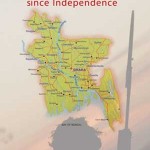The situation in the TTDF is rather different. Indeed, there are signs that the ethnic imbalance – never good at the best of times – has dramatically worsened since 1992. It must be stated, however, it is very unclear whether this is as a result of racial discrimination and any suggestion to that effect is perhaps premature.
In 1992, the TTDF comprised of the Trinidad and Tobago Regiment (TTR) and the Trinidad and Tobago Coast Guard (TTCG). In that year, the ethnic balance was given as follows:18
Since then, the TTDF has been substantially expanded in size – more than doubling in the case of the TTR (to brigade size with four battalions and 2900 personnel) and the TTCG (to over 1300 personnel) and the formation of a small independent air wing (the Trinidad and Tobago Air Guard TTAG with 196 personnel) in 2005. However, the ethnic composition of the forces has shown a marked deterioration:19
This apparent deterioration in the proportion of Indo-Trinidadians in the TTDF may be at least partially due to the overstating of the 1992 data by the inadvertent inclusion of mixed-race personnel in the data for Indo-Trinidadians.
Nonetheless the decline should be cause for concern as, while the TTDF asserts with some justification that it does not discriminate against Indo-Trinidadians, there is a perception that the TTDF does not want Indo-Trinidadian recruits and that during the course of training, Indo-Trinidadian recruits are singled out for racial abuse by Afro-Trinidadian recruits and NCOs. There is some evidence to suggest that such abuse may indeed occur but such instances are exceptions rather than the norm.20 There seem, however, to be few bars to promotion within the TTDF as both the TTR and TTCG have had Indo-Trinidadian Commanding Officers and the current Chief of Defence Staff is also Indo-Trinidadian.
However, there is also a general reluctance among Indo-Trinidadians to enlist in the TTDF, partly because of better career opportunities elsewhere, but also because of a complete lack of awareness of the career options available in the TTDF. So thorough is the disconnect between TTDF recruiting efforts and the Indo-Trinidadian community that few of the latter even know when recruiting takes place. With no military presence in Indo-Trinidadian dominated areas, members of the community are not exposed to the military and as a result few have any interest in enlisting. This state of affairs is not satisfactory as a disproportionate share of Trinidad’s skilled and educated manpower is thus effectively excluded from TTDF selection.
Conclusions
The precedent set by the misuse of security forces in Fiji and Guyana has unfortunately skewed the perception of the security forces in all three nations under review. This is doubly unfortunate in that in Guyana and Trinidad there are opportunities for the Indo-Trinidadian community to rectify historical imbalances and by so doing remove the risk of such forces being used for ethnic repression in the future. Racial discrimination may be a factor but in the latter two cases at least, the principal factor in poor Indian representation in the security forces is a lack of applicants. It would be a pity if this trend continues.
Notes:
- "Rumblings of a revolution", Hamish McDonald, Sydney Morning Herald, October 27, 2007
- R. Premdas, Ethnic Conflict and Development: The Case of Fiji (Aldershot: Ashgate Publishing, 1995), p.32
- The term Indo-Fijian as used here has met with opposition from some indigenous Fijian politicians who claim that the term “India” should be used as the term Indo-Fijian undermined the supremacy of the indigenous population. See "Ban the term Indo-Fijian: Minister", Hindustan Times, August 5, 2006
- http://www.stuff.co.nz/world/1404533/Fiji-police-chief-attacks-Indian-police-officers
- http://www.solomontimes.com/news.aspx?nwID=3616
- http://www.radiofiji.com.fj/fullstory.php?id=30289
- V. Lal, Fiji: Coups in Paradise (New Delhi: Allied Publishers, 1990), pp.27-28 and Y. Gaunder, 'Island's Curse' in India Today: June 5, 2000
- Unofficial pdf copy of the Disciplined Forces Commission Report: May 2004, p.196
- Ibid, p.89
- Report of the British Guiana Commission of Inquiry, p.49
- G. K. Danns, Domination and Power in Guyana (New Brunswick: Transaction Books, 1982 ) pp.120-122
- Unofficial pdf copy of the Disciplined Forces Commission Report: May 2004, pp.90-101
- Ibid p.200
- S. Ryan & J. La Guerre, Ethnicity and Employment Practices in Trinidad and Tobago (St. Augustine: Centre for Ethnic Studies, 1993), p.160. It should be noted however, that this study did not adequately address the “mixed-race” phenomenon in Trinidad. It is likely that the Indo-Trinidadian percentage was at the time slightly lower than the numbers suggest.
- http://www.trinidadexpress.com/news/Gibbs__Khan__Nizam_talking_for_months_on_imbalance-119161194.html
- This was taken from a list of potential recruits published in the local media in May 2010. Anecdotal evidence suggests up to 42% of police recruits in 2009 were Indo-Trinidadian.
- http://www.guardian.co.tt/node/10070
- Data taken from Ethnicity and Employment Practices in Trinidad and Tobago
- While the TTPS data is official, the information for the various branches of the TTDF is based on the author’s discussions with TTDF personnel conversant with the figures.
- The author has heard of at least two such instances – one first hand from a retired officer in the TTR and the other second hand from a physician who treated the victim of such abuse.





